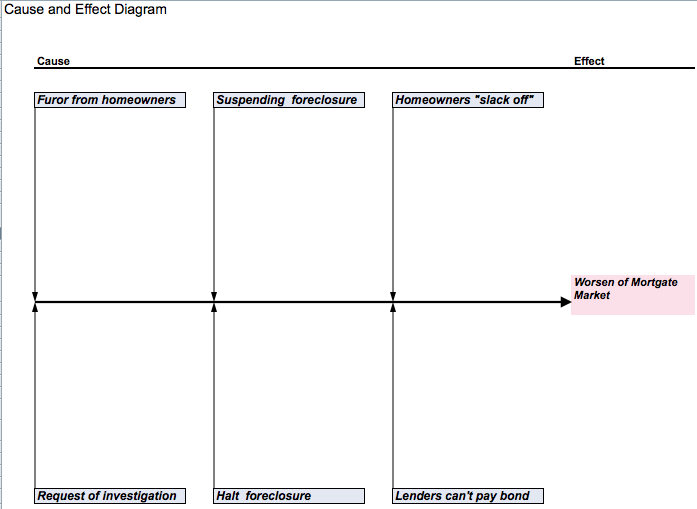 While studying today, I kept receiving calls from Fido customer service, requesting my feedback on their service. Different people kept calling me from the same phone number, and each call was within ten minutes of the preceding one. After intentionally missing ten calls, I got annoyed and picked up to finish their survey. “Sir, I have marked you off the list, thanks.” The callers’ accented voices were echoing in my head; and suddenly, outsourcing popped up in my mind.
While studying today, I kept receiving calls from Fido customer service, requesting my feedback on their service. Different people kept calling me from the same phone number, and each call was within ten minutes of the preceding one. After intentionally missing ten calls, I got annoyed and picked up to finish their survey. “Sir, I have marked you off the list, thanks.” The callers’ accented voices were echoing in my head; and suddenly, outsourcing popped up in my mind.
Indeed, outsourcing reduces costs for the companies so they can increase their profits. However, in long term, there seems to be a lot of potential problems with it. Outsourcing creates dissatisfaction for employees, customers, and the third parties themselves. Layoffs caused by outsourcing obviously lowers employee morale, and pushing third parties to front line to deal with customers seems to make both sides frustrated. The combination of the above factors results in lowers productivity and damage to company image. Instead of spending so many money and effort to motivate employees and improve brand image, why don’t companies find better alternatives for outsourcing? Saving these resources may be even more cost-effective than reduction in cost by outsourcing.
Failure of outsourcing


Last weekend, I went back to Hong Kong for some personal reasons. In the Hong Kong airport, I spotted an intriguing Starbucks ad, which reminded me about class concepts like sustainability and marketing strategies.
As I skimmed the ad, the word “personalize” caught my eye. This is a really thoughtful ad; it emphasizes customization which makes consumers feel that they have certain autonomy to what they are buying, and it also allows them to treat buying coffee as a unique experience. Moreover, this clear and simple ad also shows Hong Kong Starbucks’ efforts in researching their target market. Residents of Hong Kong are generally obsessed with “conspicuous consumption”. A fancy cup decorated with diamonds will certainly catch their attention.

Besides its successful marketing, Hong Kong Starbucks’ promotion of the “Charm Tumbler” reveals that the company has also fell into step with the “green wave”. Encouraging customers to use the “Charm Tumbler” not only brings in extra profits and cost reduction from paper cups, but also demonstrates corporate social responsibility that enhances a company’s image. In my point of view, the “Charm Tumbler” is a perfect new development for Starbucks in Hong Kong, where workaholics are everywhere and caffeinated drinks are in high demand. What’s better than being eco-friendly and maximizing profits at the same time?

http://online.wsj.com/article/APd8b4eb86eb2f4da49ce026d2d65cb39d.html?KEYWORDS=Gap
Today as usual I went online and check out some news. I accidentally click into this post about Gap’s new logo. What’s so special about this news? It again shows the power of social media.
New Gap logo…

If you still think company’s logo is by its owner’s preference or tastes, you are not living in the 21st century. As most of the people who have seen Gap’s Logo, I am shocked. This new logo no longer reminds me about Gap’s image of a clothing producer, but instead, an IT company. Well, Gap may not care about what I think; however, I am sure they care about the “flap” in social media.
What’s happening on Facebook and Twitter?
Apparently, Gap’s fans on Facebook and Twitter are all furious about the new logo. They all prefer the old one better. Although Gap is “asking for opinions”, personally I think Gap is only trying to comfort their fans because they said they are still going to publish it soon.
I think Gap should take this “flap” seriously because the power of social media is not imaginable.

![[Robobonds]](http://sg.wsj.net/public/resources/images/MI-BG339_Robobo_NS_20101005183314.gif)


What make U.S Mortgage market worsen and worsen these days? Based on information in the above two articles, I will explain the situation briefly using Fishbone Analysis.
What are the causes?
- Public investigation of questionable foreclosure documents
- Furor from homeowners that mortgage lenders have been evicting houses by using flawed court papers
These lead to…
- Further suspension of foreclosures
- Halt foreclosures
In most of the banks in the states!
Finally, the result is
- Mortgage lenders have to keep advancing payments that will go to all mortgage bondholders instead of foreclosures.
- Homeowners uses this advantage so they are “not willing” to pay.
In the end, Mortgage lenders don’t have enough revenue to pay the mortgage investor which eventually leads to “further losses in the already-battered $2.8 trillion market for residential mortgage-backed securities.”
I think Fishbone Analysis is quite helpful when the case are involved with so many factors. The structure of the analysis provides better overview of the case, which makes me understand the situation better.
![[FUEL]](http://sg.wsj.net/public/resources/images/MK-BG500_FUEL_NS_20101001175633.gif)
http://online.wsj.com/article/SB10001424052748703859204575525963701140270.html?mod=rss_whats_news_us_business
Front Stage?
The government-owned automaker General Motors Co. has just announced its fuel economy development goal up to 2025 for its SUV. Their most aggressive approach would push the fuel economy target to 62 miles a gallon (MPG), which is highly encouraged by environmentalists and Mr. Obama.
Can GM reach its goal in 2025? With an additional cost between $2,800 and $3,500 to a vehicle, GM can even reach its goal next year. Toyota, one of GM’s biggest competitors, has the prius model which gives a MPG of 51 and costs way less than GM’s future 62 MPG SUV.
http://online.wsj.com/article/SB10001424052748703882404575519773455335584.html?KEYWORDS=Toyota

Back Stage.
While GM still worries about its fuel economy, Tata Nano’s has already come up with a plan to invade Northern America’s automobile market. Again, Toyota finds its way to save its market share from future Nano’s invasion – trying out minicars with Japan’s largest minivehicle seller on its biggest market.


GM is not only fallen behind in fuel economy, but everything. As one of Detroit’s leaders, GM should start to question itself why this happen. In my opinion, one thing that determine the difference between GM and Toyota is system.

Burger Giant McDonald got blamed for heart diseases by an ad campaign by PCRM.
http://online.wsj.com/article/SB10001424052748704190704575490011354963240.html?KEYWORDS=burger
Is an ad campaign that blames McDonald’s for heart disease fair or unfair?
In my opinion, I think this ad campaign is not fair on McDonald’s. Firstly, although PCRM is trying to raise awareness of heart diseases through this ad campaign, they have better alternatives such as targeting a more general term “fast food” instead of McDonald’s. And they also lead me to think, why McDonald’s but not KFC, Burger King, or even Wendy’s? Is there a scheme behind? Secondly, these damages from social media always take long time for the company to rebuild their reputation. PCRM’s decision may not be a wise one.
Indeed, I think PCRM’s purpose and direction is right, and I support how they teach people about these potential side effects of fast food. For McDonald’s, I think they will be able to defeat this challenge since they are experienced to dealing these health concern from societies. And think deeper, this ad actually also will help people to remember about McDonald’s – no matter if it’s a positive or negative message.


Suicides in Foxconn’s factory in southern Chinese city of Shenzhen earlier in the year is an best example of how unethical some businesses can be, sometimes even big companies. In only five months, there are twelve employees committed suicides in this Foxconn’s factory and more have attempted. These tragedies happened because the employees suffered from massive workload (i.e average 10~12 hours of work everyday), stress and unfair treatments (i.e low income $130~140 Canadian Dollars per month).
Here is an detailed CNN report on this case: http://edition.cnn.com/2010/WORLD/asiapcf/06/01/china.foxconn.inside.factory/index.html?iref=allsearch
I think the way how Foxconn treat their employees is nothing different from exploitation. Abusing the advantage of large labour market in China, Foxconn never worried about losing their employees; instead, Foxconn neglect employees’ physical and mental conditions, and even provide its employees such poor salaries, working conditions, and benefits while it’s earning over 40 millions a year from Apple, Dell and Sony, etc. Consequently, suicides took places and Foxconn experienced a average lost of 50,000 employees per month in last five month; furthermore, after its public reputation is ruined, Foxconn also lost trust from some of its partners. From this issue, it’s not hard to tell how important ethics are in business world.

 While studying today, I kept receiving calls from Fido customer service, requesting my feedback on their service. Different people kept calling me from the same phone number, and each call was within ten minutes of the preceding one. After intentionally missing ten calls, I got annoyed and picked up to finish their survey. “Sir, I have marked you off the list, thanks.” The callers’ accented voices were echoing in my head; and suddenly, outsourcing popped up in my mind.
While studying today, I kept receiving calls from Fido customer service, requesting my feedback on their service. Different people kept calling me from the same phone number, and each call was within ten minutes of the preceding one. After intentionally missing ten calls, I got annoyed and picked up to finish their survey. “Sir, I have marked you off the list, thanks.” The callers’ accented voices were echoing in my head; and suddenly, outsourcing popped up in my mind.





![[Robobonds]](http://sg.wsj.net/public/resources/images/MI-BG339_Robobo_NS_20101005183314.gif)


![[FUEL]](http://sg.wsj.net/public/resources/images/MK-BG500_FUEL_NS_20101001175633.gif)






